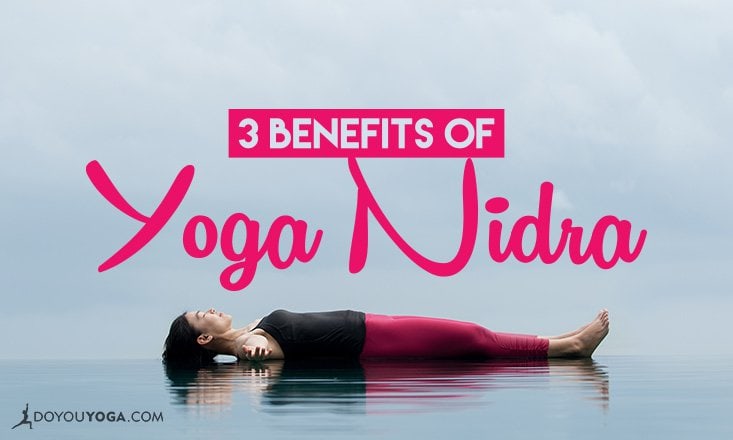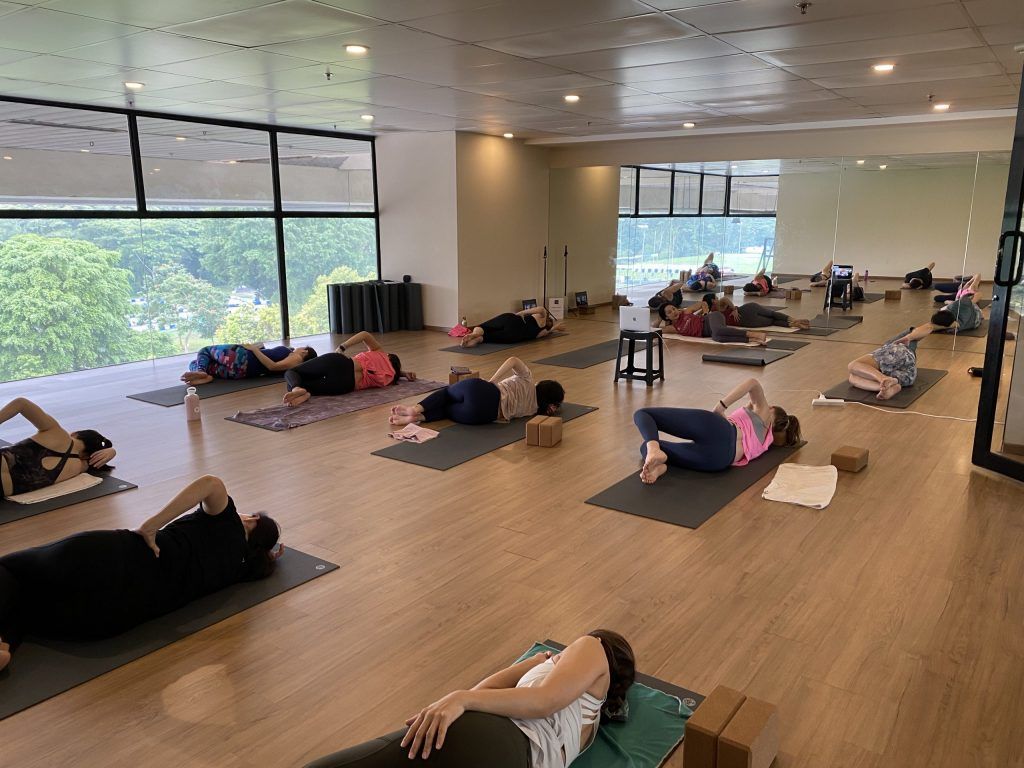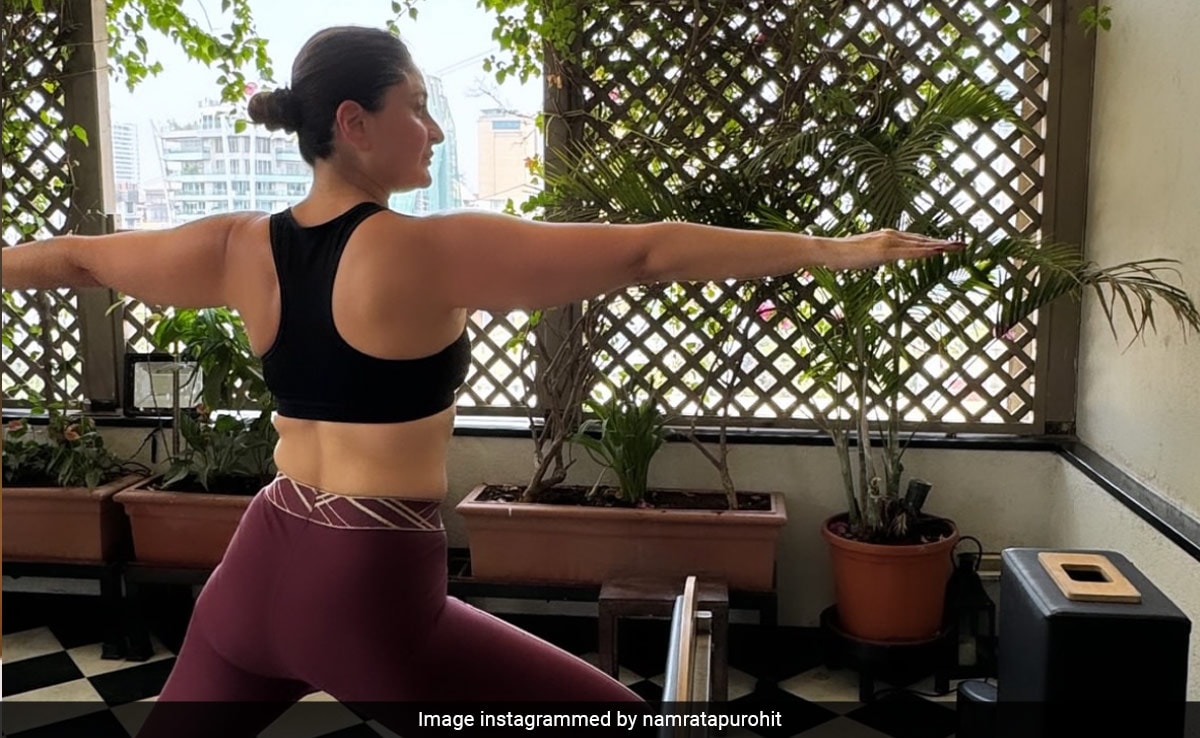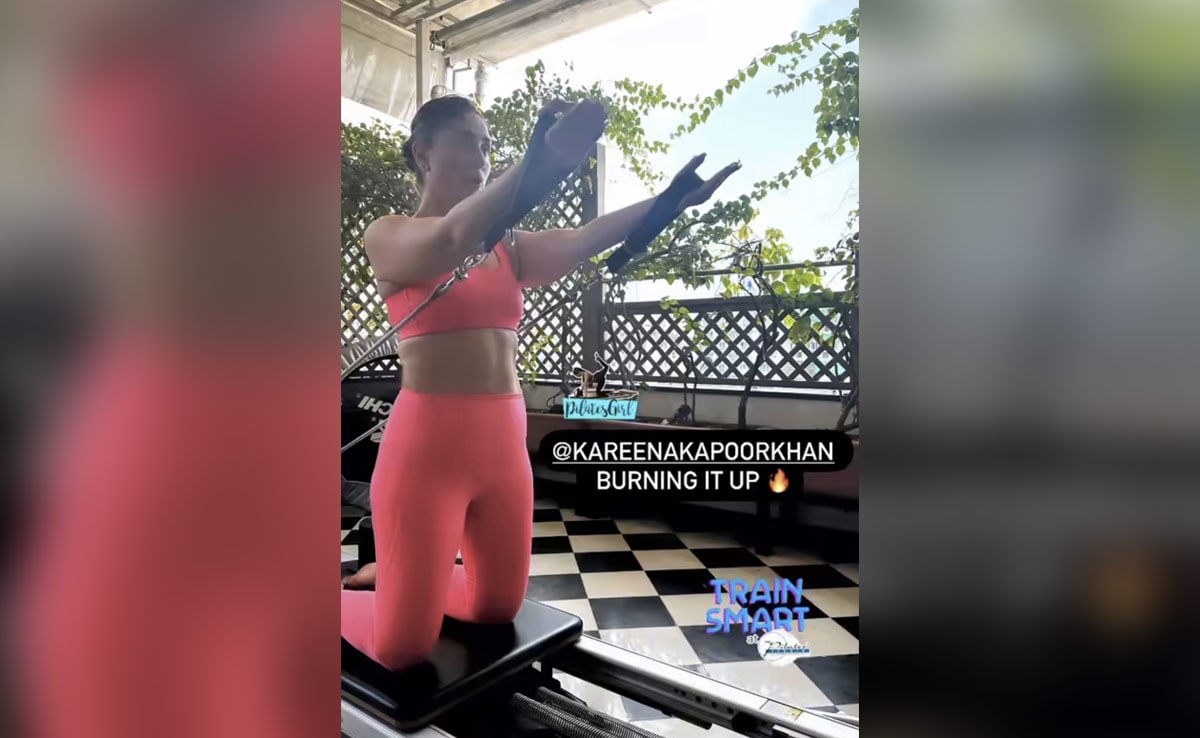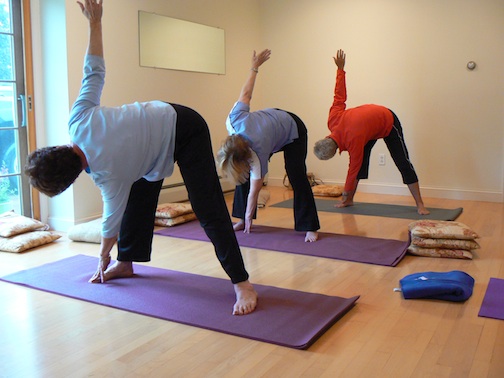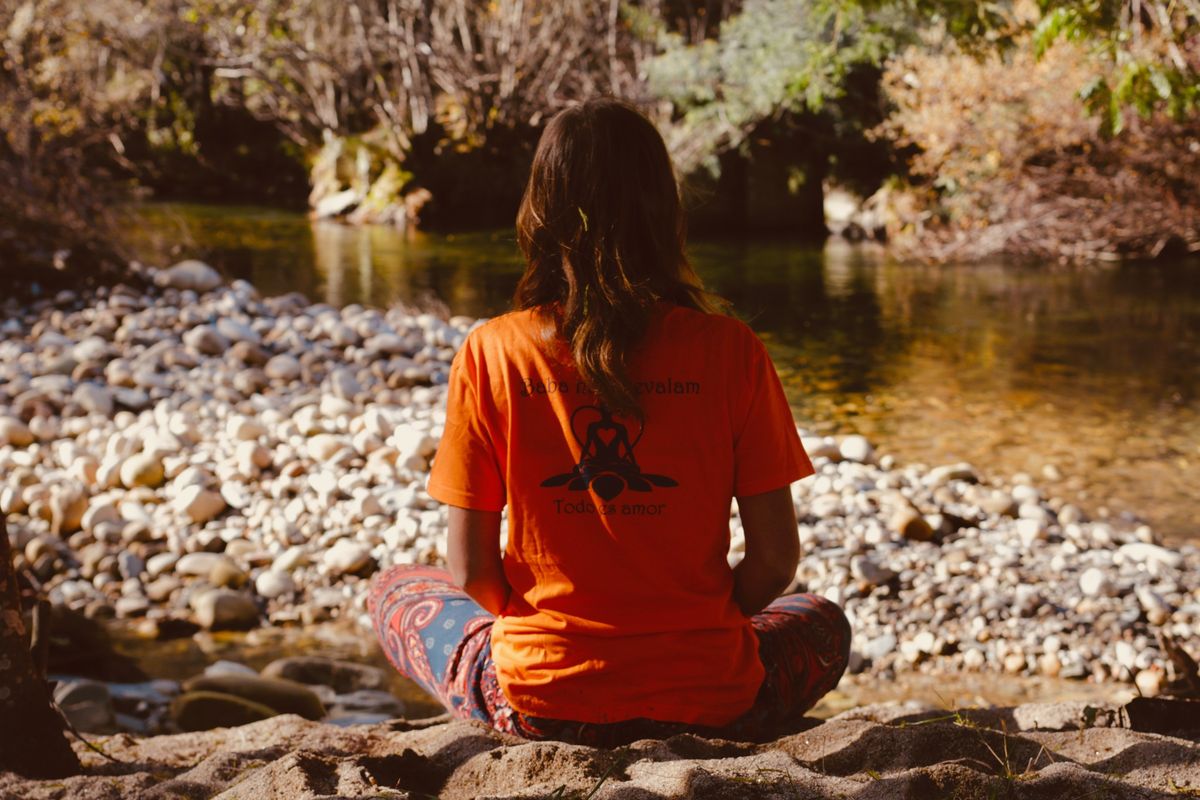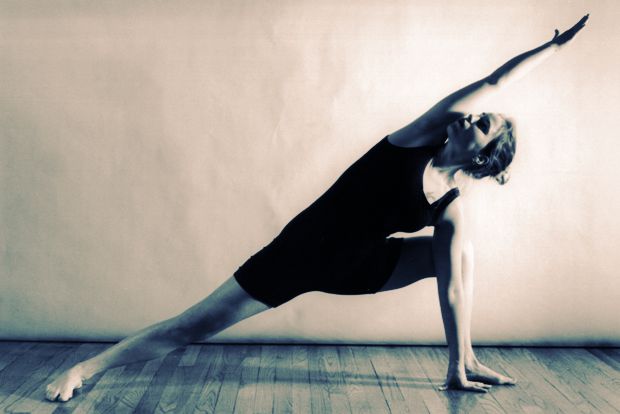Taking yoga to new heights with acro yoga
A Charlottetown yoga instructor is taking the fear out of flying — Marie-Eve Filion is teaching acro yoga, a combination of acrobatics and yoga.
Filion, 30, recently moved to P.E.I. from Montreal, where there’s a large acro-yoga community and where she received certification to teach it last summer from AcroYoga Montreal.
I enjoyed that freedom, of trusting another person to hang onto me.
— Jack Wheeler”It’s really scary at first — going past this feeling of being afraid,” Filion said. After that, “it’s easier than it looks … you might just fall in love with it.”
Jack Wheeler had tried acro yoga before and brought his 11-year-old son Nathan to class.
“I thought I’d bring him just to give him the opportunity to fly a little bit,” Wheeler said.
The Goods, November 30: Butter Blondies, The Skinny On Fats, and Acro Yoga
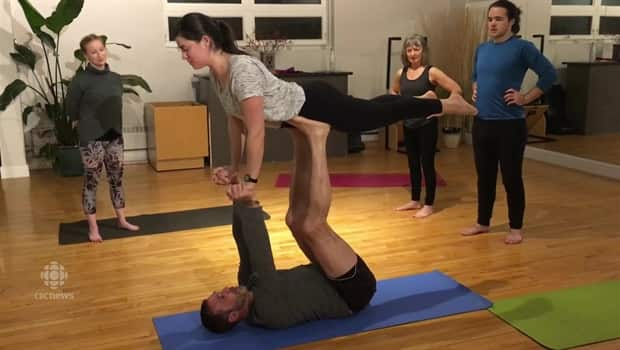
Marie-Eve Filion does an acro-yoga flying move with student Jack Wheeler
6 years agoDuration0:54
Marie-Eve Filion does an acro-yoga flying move with student Jack Wheeler
“It was really fun,” said Nathan, whose favourite part was “being in the air.”
“I like the freedom of sometimes letting go,” said Wheeler, who is six feet three inches tall. “Marie-Eve has done very well in getting us to trust each other, so that was a big part of it too — I enjoyed that freedom, of trusting another person to hang onto me.”
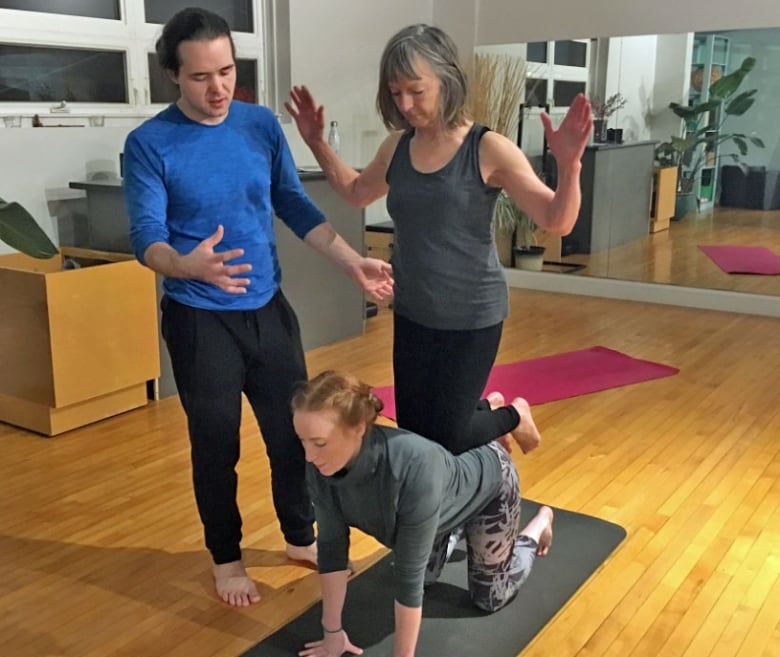
Sarah Lynch, bottom, acts as a base for Marilyn Sparling to try a flying move while Jamie Barry spots her. (Sara Fraser/CBC)
“It’s a fun game to play with other people,” said Marilyn Sparling, who calls herself a “senior.” She’s taken yoga for years and was excited to discover acro yoga.
“The ecstasy of flying is really quite fun,” Sparling enthused, although she also enjoys the feeling of power and stability in the base position.
In acro yoga, people work in groups of three — a base, a flyer and a spotter. The base supports the weight of the flyer. Trying both roles will help you perfect a move more quickly, Filion said, because you understand what you can do to help the other person.
It helps to be strong and flexible, but neither is required to try acro yoga, Filion said. People of any age can try it — Thursday evening’s class included Islanders from ages 11 to “senior.” Filion has even done it with her parents.
‘A way of communicating’
“I’m in love with this and the whole lifestyle and ideas that come with it,” she said. “It’s helpful in many aspects of life. It’s a form of training but it’s also a way of communicating.”
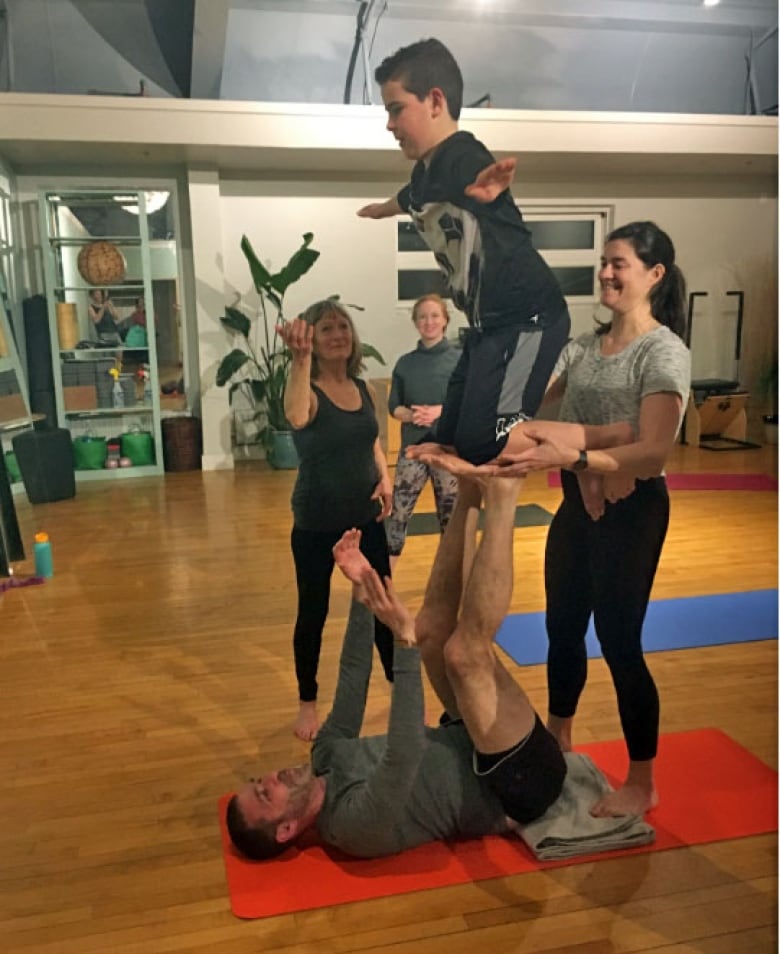
Jack Wheeler hold his son Nathan, 11, in acro yoga class. (Sara Fraser/CBC )
Much of nailing a move successfully is about trust — trust that your partner has the strength and balance to hold you, and trust that they’ll communicate what’s working and what isn’t.
For these reasons, acro yoga could be helpful for practicing teamwork and communication skills, Filion said, whether it’s a business or sports environment.
Physically, the practice can improve strength, flexibility, balance and general fitness she said.
‘I want to share it’
Filion began practicing three years ago, after a friend saw acro yoga during a trip and was enchanted.
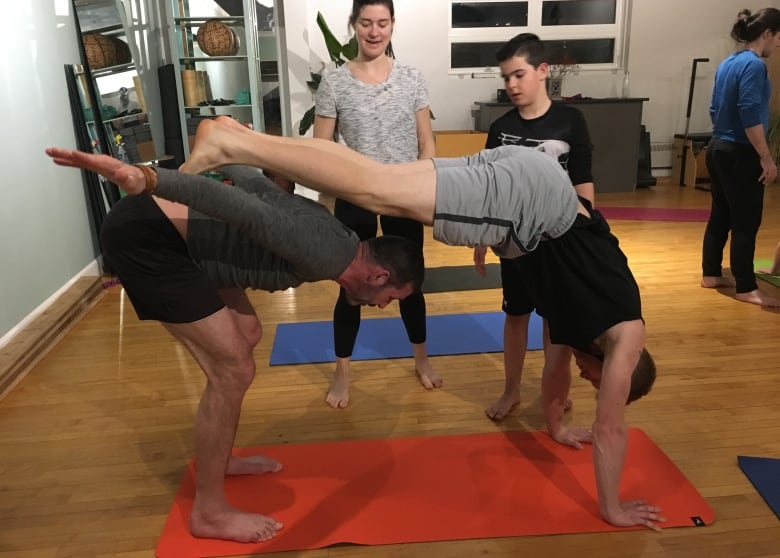
Jack Wheeler, left, and Jordan Cameron, right, do a ‘downdog flying’ move. (Sara Fraser/CBC)
In Montreal, people meet in a certain park to practice acro yoga, Filion says — they call it “playing.”
“We say that a lot — ‘Do you want to come play?'” she says with a smile, sharing that acro yoga has brought her a lot of joy and helped her through an unhappy patch in her life.
“I want to share it with people,” she says. “If it has the same effect on them as on me, then I’m happy to spread the practice.”
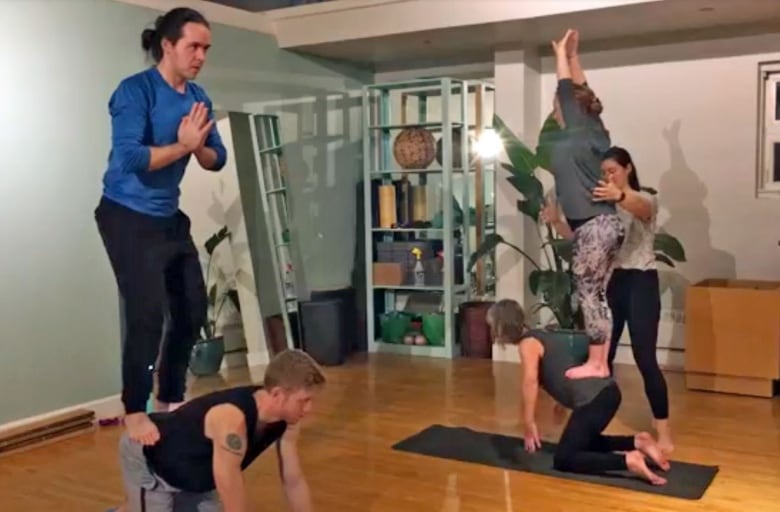
Acro-yoga can be done by participants of all ages. (Sara Fraser/CBC)
As the popularity of acro yoga grows, communities of enthusiasts can be found in an increasing number of cities, Filion said, especially in North America.
[……]

